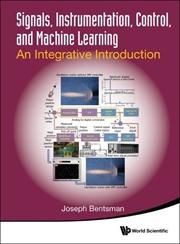Strike-Slip Terrains and Transform Margins
◆日本地質学会第132年学術大会セール 開催中!:2025年10月24日(金)ご注文分まで
※上記表示の販売価格は割引適用後の価格です 出版済み 3-5週間でお届けいたします。 Title: Strike-Slip Terrains and Transform Margins Subtitle: Structural Architecture, Thermal Regimes and Petroleum Systems Author: Nemcok, Michal (RM Geology) / Dore, Anthony G. (Statoil (UK) Ltd.) / Henk, Andreas (Technische Universitat Darmstadt) / Doran, Helen (Ola Geoscience) Publisher: Cambridge University Press ISBN: 9781316513958 Cover: HARDCOVER Date: 2025年01月 DESCRIPTION Many of the world's continents are bounded or traversed by vast fault networks that move laterally, like the well-known San Andreas Fault. As well as being major tectonic features of the Earth's surface, these strike-slip regimes are vitally important to the world's natural resources - petroleum, water, and geothermal energy. This book covers all aspects of these regimes; how they initiate; how they develop; and the natural resources associated with them. Numerous global case studies illustrate structural development, thermal and fluid flow implications, and commercial applicability. No other book provides such a comprehensive overview of these settings, and this volume will stand as a critical reference of the state of knowledge of strike-slip terrains and transform margins. It will be invaluable for a broad range of readers, from advanced students of geology and researchers specializing in strike-slip regimes to geoscientists and managers involved in natural resources and energy solutions. TABLE OF CONTENTS Introduction; 1. Basic description of structural architecture in transform margin settings; 2. Mechanics of strike-slip faulting and transition to drift phases; 3. Determination of continental, proto-oceanic and oceanic crustal boundaries; 4. Determination of timing of strike-slip events and continental breakup along transforms; 5. Role of lithospheric composition and compositional variations in evolving structural styles; 6. Role of pre-existing anisotropy in evolving strike-slip structural styles; 7. Role of syn-tectonic deposition and erosion in evolving structural styles; 8. Fluid flow systems and magmatism; 9. Role of pre-tectonic heat flow in thermal regimes; 10. Role of stratigraphic and structural architecture in thermal regimes; 11. Role of syn-tectonic deposition and erosion in thermal regimes; 12. The role of deformation on thermal regimes of transform margins; 13. Role of fluid flow on thermal regime; 14. Models of source rock distribution, maturation and expulsion; 15. Models of reservoir quality distribution; 16. Sealing characteristics; 17. Models of hydrocarbon migration; 18. Trapping styles; References; Index. 最近チェックした商品
4,988円(税453円) 10,620円(税965円) 8,445円(税767円)

|
||||||||||||||||||||||||||||||||||||||||||||||||



























